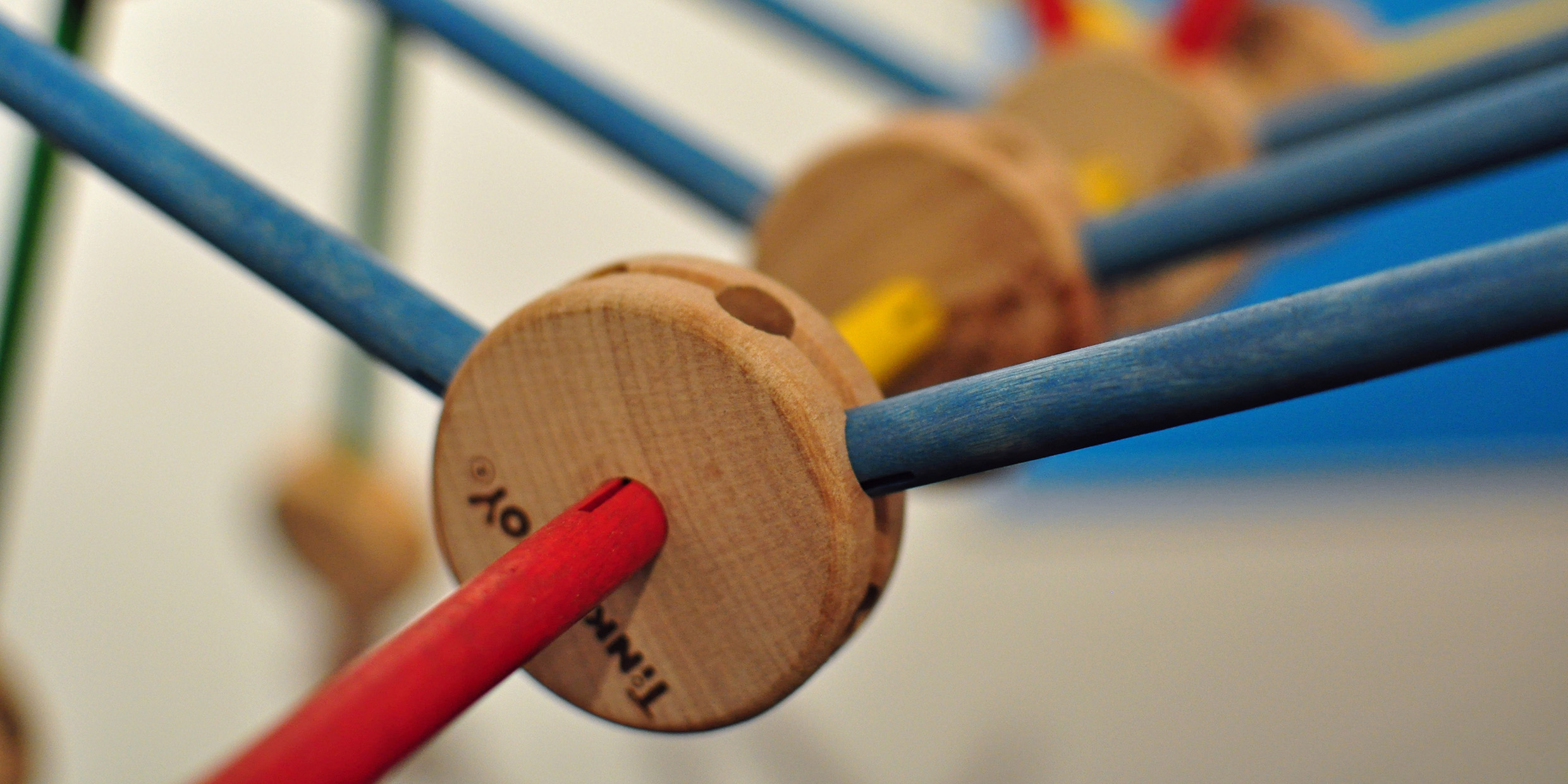Originally published 29 January 2002
How do you make a universe?
Well, you’d start with something like Tinkertoys. A good universe construction set, like a good kid’s toy construction set, should have rods and connectors, in standardized sizes, enough sizes to be versatile, but not so many as to be unwieldy.
A good universe construction set should be easy to put together, fairly rigid once together, and not too hard to take apart.
And that’s just what the universe is made of. God’s Tinkertoys — particles and forces.
Start with a big box of protons and electrons. The particles are charged, plus and minus, so they grip together by an electrical force.
One proton and one electron and you have a hydrogen atom. Hydrogen is a light, colorless gas that’s useful for filling party balloons (except we don’t have any rubber yet) or making stars.
A ball of hydrogen, held together by gravity, is all you need to make a star. But it must to be a very big ball, with lots of weight crushing down, so that the temperature at the center reaches 10 million degrees or so. Then something curious happens. The protons and electrons are wrenched apart. Two protons snap together by another force, called the strong nuclear force. One of the protons sheds its positive charge and becomes a neutron (we’ll ignore the details). Then two of these proton-neutron combinations snap together to make a helium nucleus.
Energy is released, which is the source of the star’s heat and light. And you are on the way to having a nifty universe.
That’s what happens at a star’s core. Protons snap together into larger and larger atomic nuclei, occasionally changing to neutrons. If these nuclei can make their way to a cooler place (as when a star blows itself apart), they can hold electrons and become the atoms of familiar elements.
And so it goes. Two protons: helium. Three protons: lithium. Four: beryllium. Five: boron. Six: carbon. Seven: nitrogen. Eight: oxygen.
Each with a corresponding number of neutrons. Snap, snap, snap. Your universe begins to get interesting.
For example, you can now make your party balloons. Rubber is a chain of carbon atoms, with hydrogen atoms or carbon-hydrogen combinations hanging on the side. The concept is simple. In principle, even a kid could snap it together, and many do in chemistry labs with model balls and sticks.
But don’t fill your balloons with hydrogen. Two hydrogen atoms react with an oxygen atom to make water, and they tend to do this explosively, which may add more excitement to your party than you wanted. So, fill the balloons with helium, which doesn’t snap together with anything, and is also light enough to let the balloons float in air. After all, you’ve got a universe in the making; you might want to celebrate.
You will have noticed that the great thing about God’s Tinkertoy set is that, as you snap in more protons, neutrons, and electrons, to make heavier and heavier elements, the properties of the elements change in surprising ways. Carbon might manifest itself as diamond, one of the hardest substances. Add one more proton, neutron, and electron and you have nitrogen, a colorless gas that makes up 80 percent of the atmosphere.
Forty-seven nuclear protons and you have silver; 32 more (with a corresponding fistful of neutrons) and you’ve got gold. Some Tinkertoy set! The surprises keep coming when you start connecting different sorts of atoms together.
Who would guess that two colorless gases, hydrogen and oxygen, together make water, the liquidy elixir of life?
Solid sodium, with eleven protons, reacts violently with water.
Chlorine, with 17 protons, is a stinky yellow-green gas. But snap together a sodium atom and a chlorine atom and you have — voila! — salt, a tasty condiment for your party pretzels.
You now have the makings of a universe (and a party), and you can think about arranging for someone to come to the party. All those things listed on the side of your breakfast food box — fats, carbohydrates, proteins, vitamins, calcium, and iron — that build strong bodies, well, snap them together. There’s nothing in the long DNA molecule, the master plan of your body, but hydrogen, carbon, nitrogen, oxygen, and phosphorous atoms. Of course, you’ll need tens of billions of those atoms to make the DNA in a single human cell.
Chemistry has the reputation for being the most boring of sciences.
It’s a bum rap. Chemistry explores the most mysterious secret of this amazing universe we live in: How, with a construction set of a small number of standardized “knobs and sticks,” you can make stars shine, rain fall, diamond hard, sugar sweet, and give air-powered gusto to a newborn baby’s bawl. Snap. Snap, snap. Snap, snap, snap.



